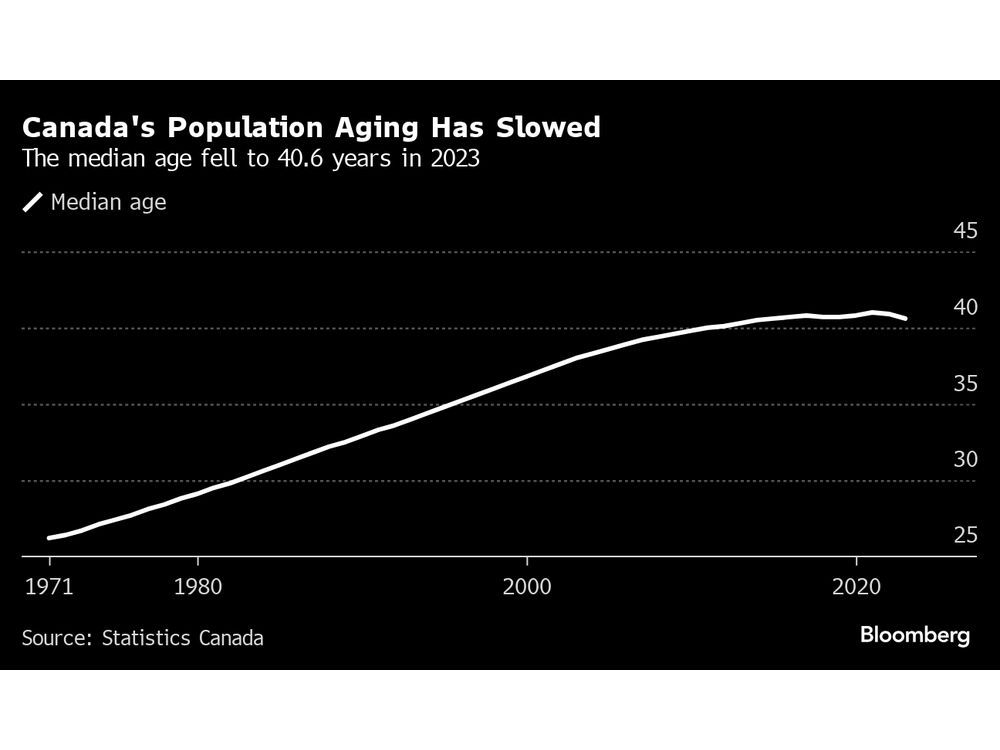
Article content
(Bloomberg) — Canada’s population aging slowed for a second straight year as a result of strong immigration, including a recent boom in foreign students and temporary workers.
The median age — which divides the population into two groups of equal size and is a key measure for a country’s age distribution — fell to 40.6 years, from 40.9, over a one-year period to July 1, 2023, according to Statistics Canada data released Wednesday.
Article content
Demographic aging also slowed, with the average age of population falling to 41.6, from 41.7, over the same period.
That’s the first time in 65 years that both the median and average age have fallen in the same year — thanks to the arrival of more than 1 million immigrants, who tend to be younger. The last time it happened was between 1957 and 1958, driven by the birth of the baby boomers.
While the age structure of a population generally changes little year over year and it’s rare for immigration or emigration to cause a sudden change, Canada has over the past year “welcomed a sufficiently large number of immigrants to have a significant impact,” the statistics agency said.
Prime Minister Justin Trudeau’s government has aggressively brought in working-age newcomers to replace workers retiring from the labor force and offset a decline in fertility rates. The country has consistently set new records for population gains, but a post-pandemic influx of newcomers has led to a backlash against Trudeau over strains on housing, infrastructure and services.
Read More: Immigration Surge Fuels Male Population Boom in Canada
Article content
The open immigration policy has now led to a growing working-age population in Canada. The proportion of the population between the ages of 15 to 64 increased to 65.7% from 65.5%, an “uncommon event in recent years” as baby boomers are now leaving this group as they reach 65 years old, the agency said.
Still, the country’s population aging continues, a trend observed in many advanced economies. On July 1, there were more people aged 65 or older than those younger than 18 for the first time in Canadian history.
The increase of newcomers in 2022 and 2023 has slowed this process, though.
Canada’s aging is driven by the baby boomers, whose youngest cohorts will continue to reach the age of 65 years until 2030.
The country also saw significant migration between provinces, as the economy strengthened in the oil and gas-producing jurisdiction of Alberta and as house prices and rents skyrocketed most dramatically in Ontario and British Columbia.
During the one-year period to July 1, 2023, Alberta gained more than 56,000 net migrants from other provinces, while Ontario lost a net 42,000, the largest numbers for each since at least 1990. British Columbia lost a net 8,000 people, the first net outmigration for the province in over a decade.
—With assistance from Derek Decloet.
Share this article in your social network